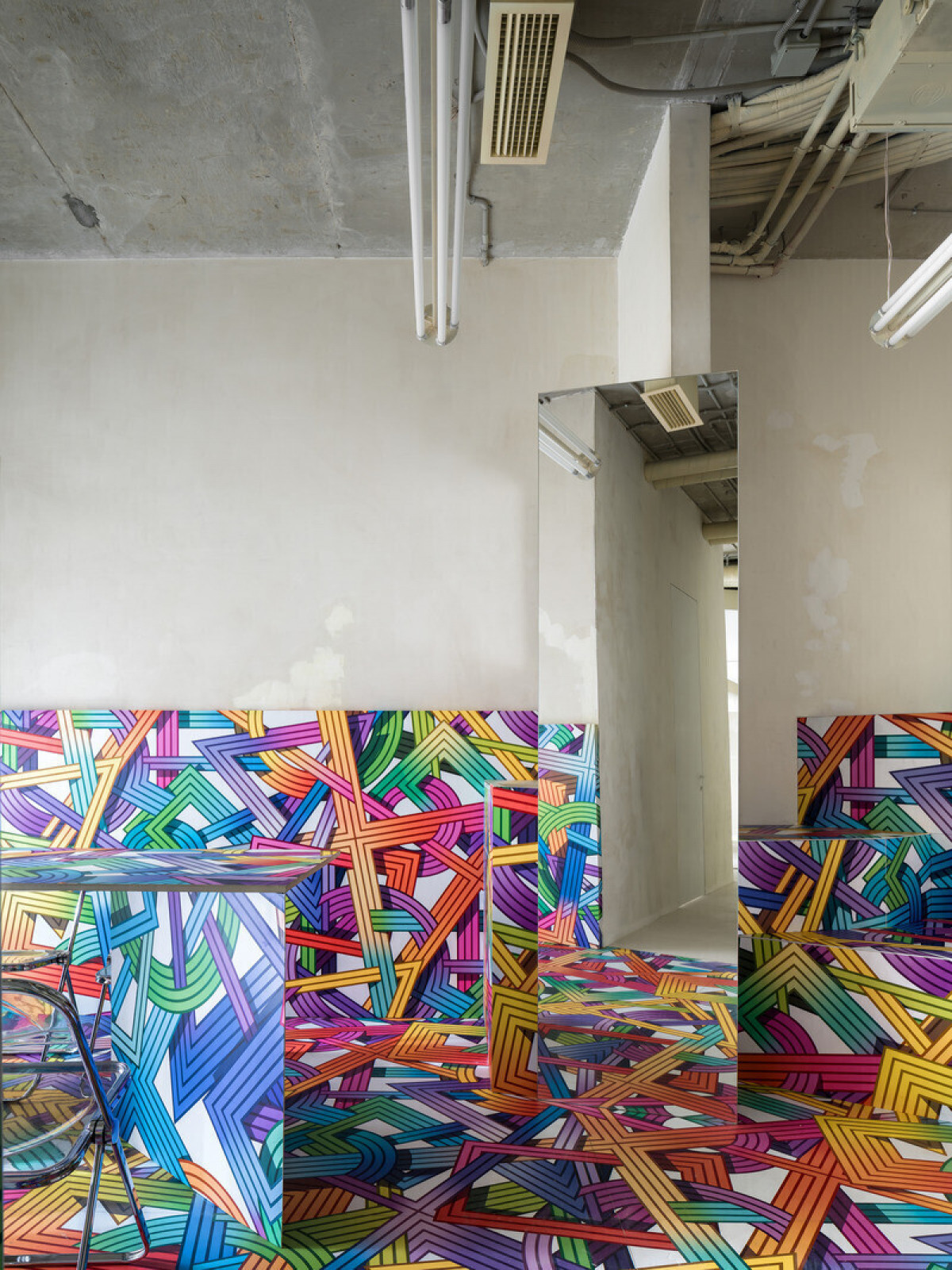04 Oct 2024

Maxim Kashin Architects, a practice dedicated to new and creative interior designs informed by complex concepts, is proud to unveil SLAVA 2024, the firm’s new office located in a historic district of central Moscow. As a modern interpretation within the original structure of the former SLAVA watch factory of the 1920s, the office design includes a blend of old and new but establishes a fresh and innovative path in interior design.
The design of SLAVA 2024 is firmly rooted in the principles of suprematism, an early 20th-century art movement founded by Russian artist, Kazimir Malevich. Focused on the fundamentals of geometry, suprematism encompasses circles, squares, rectangles, straight lines, and limited colour palettes as the fundamentals of an ideology suggesting that the visual appearance of objects in our world is far less significant than their true essence, beyond the limits of what we see.
“Since I was a child, I have been fascinated with the structure of the universe, and the concept of infinity and what lies beyond the horizon of our starry skies,” says Kashin. “The more I studied, the modernists of the early 20th century also grabbed my attention with their alternative visions of time and space, expressed through radically new representations of the world around us.”
The interior design of ideology
Malevich furthered his vision of suprematism by transitioning from a two-dimensional space ideology to three-dimensional volumetric forms, which he called “architectons.” Students, followers, and Malevich himself then carried the concept of “architects” forward in search of new architectural styles, with Lazar Lissitzky and Lazar Khidekel eventually applying such forms to the designs of buildings and structures.
In the spirit of that ideological advancement, Maxim Kashin has transitioned from the suprematist plane, to the suprematist volume and beyond, putting forth his vision of suprematist space in the volume of the interior. His introduction of suprematism’s infinite possibilities to interior design blends the ideas of the masters to create new applications of textural contrasts and forms. In directing that evolving process inward to the design of his own firm’s office, he embarked on a journey to create a sort of showroom of his ideas to inspire both his employees and his clients.
“I wanted to visually move away from the classical understanding of an office,” he explains. “I wanted to create an inspirational space for my employees but, at the same time, I wanted to specifically design the space to address the daily functions of an architectural firm.”
Inspirations that inform
In the case of Maxim Kashin Architects, those functions often involve working with multiple large-scale drawings and models during the design process. To accommodate that accumulation of materials, Kashin wanted to provide each employee with storage tailored to the tasks at hand, with organized spaces kept clear for viewing and working with large drawings.
“I was inspired by a television series called ‘For All Mankind’, where much of the action took place in the NASA mission control centre, where workspaces were organized to all face in one direction,” recalls Kashin. “I noticed that they had panels on the side where they could attach diagrams and notes, but they were not visible to other employees, which removed the visual noise and facilitated order.”
Sleight of hand
SLAVA 2024 is characterized by the achievement of lightness and fine lines. Each forward-facing workstation is equipped with spaces tailored to office equipment and supplies, with raised vertical panels for mounting and working on large format drawings. Kashin used thin sheets of steel, just 2mm thick, to create the panelled walls and furniture, like sheets of paper echoing the designs of the conceptual “paper architects” of the 1970s. Upon the steel walls of SLAVA 2024, the projects of the firm’s employees can easily be magnetically affixed.
Although Kashin’s white canvas features clear geometric boundaries that define its workspaces, it is also rife with dynamics favourable to enhancing spatial perceptions, drawing on the essence of white as a symbol of infinity in suprematism. His design features mirrors in his mix of vertical panels, creating the illusion of more abundant space, and emphasizing the space’s abstract geometric forms, including a large floating lightbox suspended from the ceiling. Additional lighting is provided by vertical columns of exposed LED rods, custom-designed to be reminiscent of fluorescent tubes in a modern interpretation that pays homage to the building’s historic past. Links to the past are also present in the preservation of walls and open ceiling areas of the original building, which further contributes to an aesthetic of sustainable ways, with minimal use of finishing materials.
A modern blend of ideas
The colour palette of SLAVA 2024 is also grounded in suprematism, with white and beige exclusively applied to the structural design and finish of the workspaces and furniture. That colour scheme is further embraced with white concrete flooring and carpeting. Off of the main work area, however, a recreation area and small kitchen epitomize the evolutionary thinking of Maxim Kashin. Its countertops and wall panels are adorned in a suprematist pattern designed and patented by Kashin, originally envisioned in black and white, but with bursts of bright colours as a second channel of information to stimulate the senses.
SLAVA 2024 is a finished product that showcases elements of the complex essence of its designer. It is also a bright reflection of the innovative work being conducted by Maxim Kashin Architects, grounded in repurposed ideologies of the past, and a new direction towards the future.